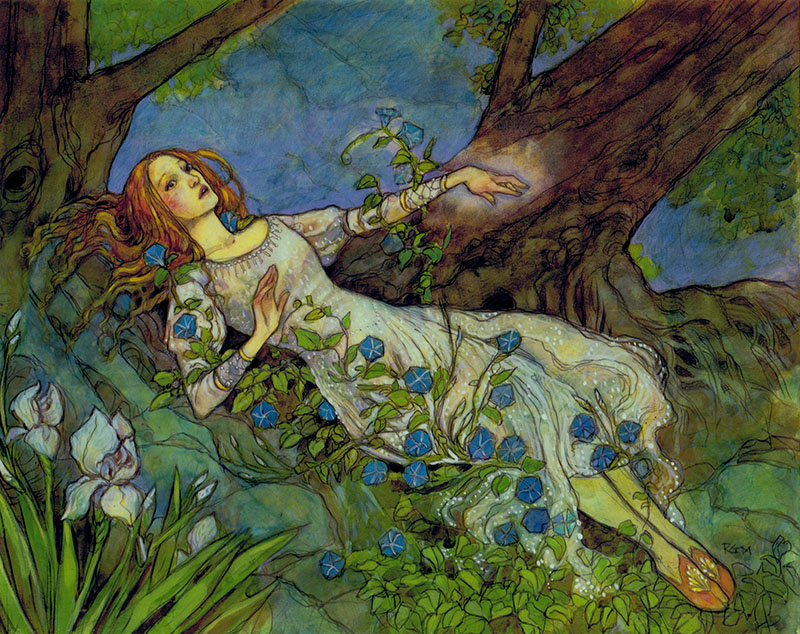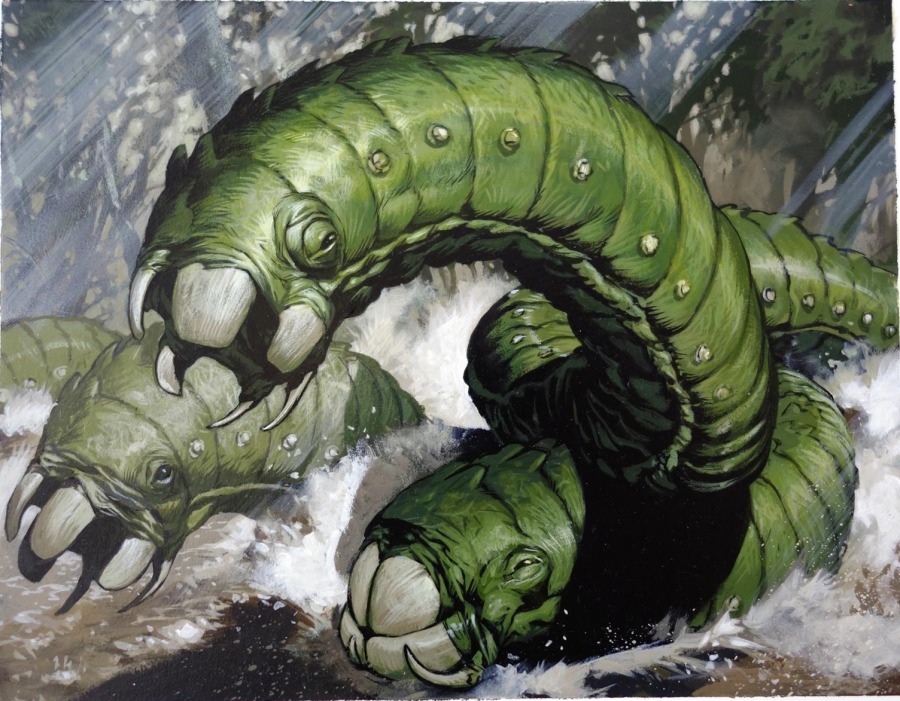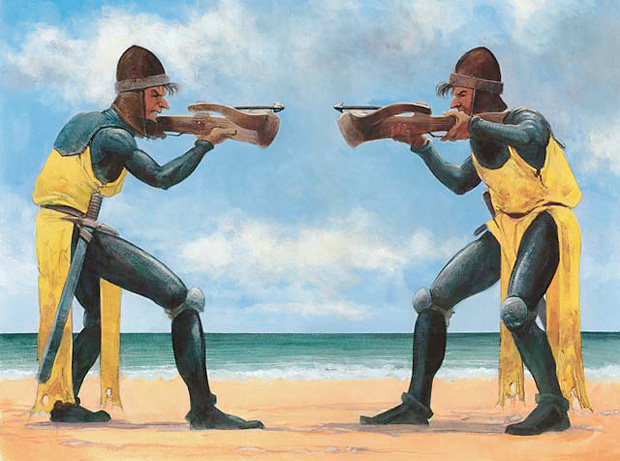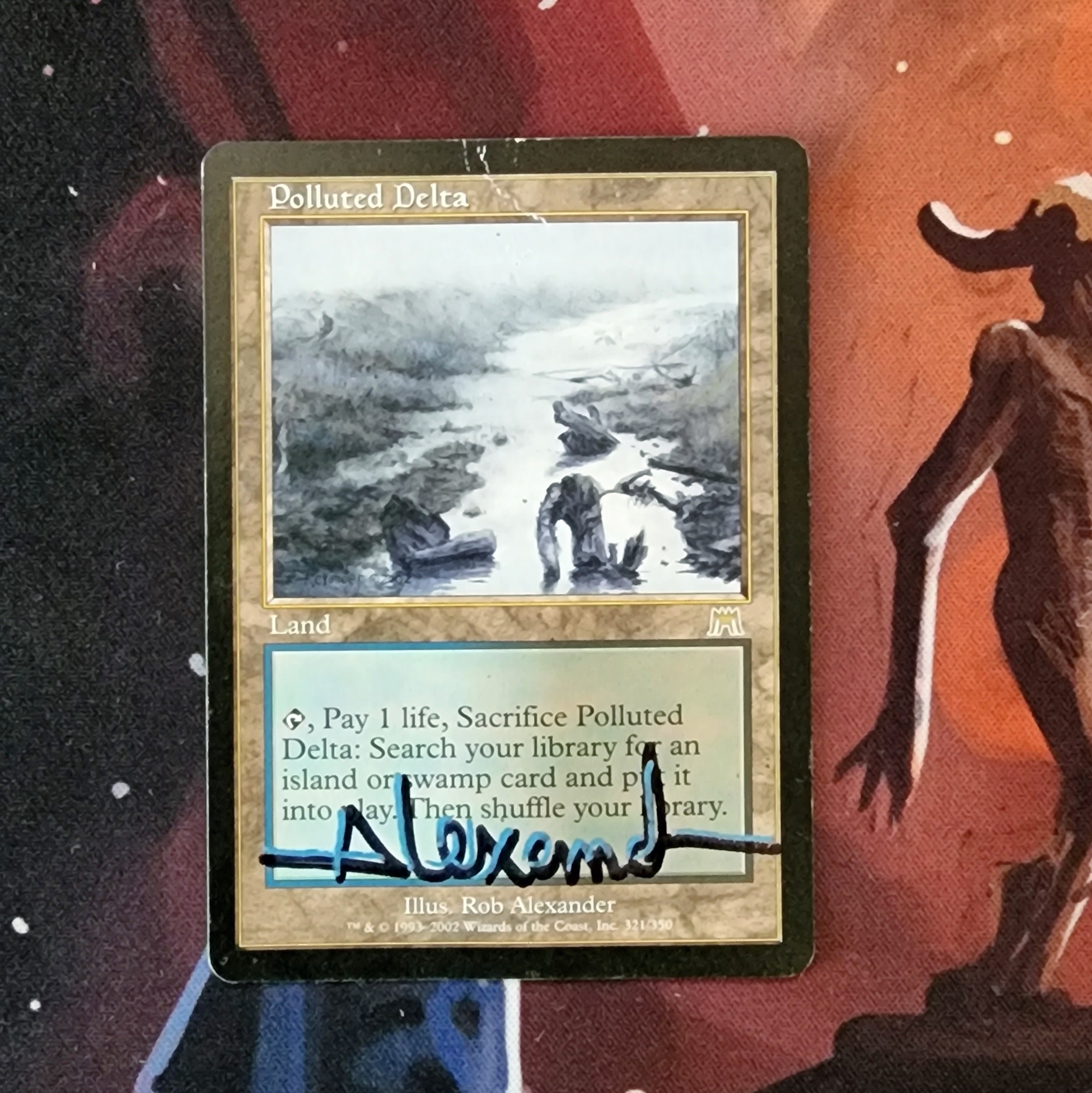Timesifter: 2002

Seedtime by Rebecca Guay
Welcome to Timesifter, a series in honor of the upcoming 30th anniversary of Magic: the Gathering. We're going to take a temporal journey to each slice of that 30-piece pie, and for each year, we're going to craft a Commander deck using cards released only in that year. Will the decks be good? I guess that depends on the vintage.
In 2002, an asteroid traveling 6.2 miles/second came within 75,000 miles of Earth. The rock was roughly the size of a football field, and while impact wouldn't have been an extinction event, it would have been extremely inconvenient, likely disrupting the first season of American Idol.
Some of you weren't born in 2002. Others of you were driving around listening to Sk8er Boi on a burned CD, a song that took you about 15 minutes to download on your 56k modem. That's how time works.
So why 2002? Two reasons -- one, because I made a wheel of chance out of a paper plate and a thumb tack, tried to spin it, stabbed my finger on the tack and gave up. I'm not a crafter. The year 2002 was the wedge it started on, and since it never actually spun, that's the year it ended on (technically).
The other reason is because 2002 was a weird year for Magic. Looking back, there have been plenty of weird years, arguably none weirder than some more recent ones, but we have to start somewhere.

Torment
"A good whack on the head usually has the same effect." -- Kamahl, pit fighter
The year 2002 was a different time -- weird cults were claiming they cloned a human, babies were being dangled off of balconies, and everyone was trying to pretend they weren't obsessed with a song about ketchup by a band called Las Ketchup. If you're not old enough to remember these things, consider it a Harsh Mercy.
Speaking of remembering things, do you remember blocks? It's been quite some time since we've had a true "block" structure for Magic releases -- those big set, small set, small set release patterns that told a story over three sequential sets. Of course, these blocks were not contained within single calendar years, so it messes with our little one-year snapshot. Torment, while releasing in February of 2002 as the first set of that year, was actually the second set in the Odyssey block.
Torment is unique for being the "black set," or the set with an emphasis on the black part of the color pie. In a set of only 143 cards (that fact itself feeling like a relic of a bygone era), 40 of them were black, representing a significant plurality. None of the other colors had more than 30 each, and many of the non-black cards had black abilities, evidenced in cards like Possessed Barbarian.
Torment also gave us the first appearance of madness as a keyword, seen on cards like Arrogant Wurm. It's also a set that has the distinction of being a release that, two decades later, features an uncommon as its most expensive card in Cabal Coffers, even now with its recent reprint. Following Coffers, you'll be shelling out the most for the set's lore protagonist, Chainer, Dementia Master, as well as Insidious Dreams, Overmaster and Cabal Ritual.
In terms of Commander, Torment's lasting legacy isn't exactly monumental, but there are some hits that are seen at tables two decades later. We've already mentioned the Cabals Coffers and Ritual of course, but Torment also gave us a number of oft-played and oft-reprinted cards like the Tainted lands (a la Tainted Isle and friends), Mutilate, Far Wanderings, Deep Analysis, and...uh...Acorn Harvest?
When it comes to our 2002 deck, Torment really wants us to play black, for obvious reasons. The problem, as we'll expand on later, is that Torment isn't the only set that came out in 2002.

Judgment
"The hippo grows wings to fight the condor." -- Nanuko teaching
Rounding out the Odyssey block and putting a bow on the story of now-dead Chainer was Judgment, released at the end of May 2002. Just as Torment was a black-heavy set, Judgment sought to "balance" (read: intentional pun) things out by only including a handful of black cards to be polite. Instead, we saw a plurality of green and white cards, none more notable than Mirari's Wake, far and away the most used card from the set.
But beyond Wake, there are plenty of Judgment cards that still find slots in players' decks, 20 years on. Krosan Verge remains a heavily utilized land fetcher in green/white decks, Sylvan Safekeeper made its first appearance in Judgment to protect your stuff at the expense of some real estate (all the while riding a giant tarantula in the original Pete Venters art), and Unquestioned Authority has been a perennially underrated way to sneak past blockers in Voltron or Enchantress decks.
There's also a particularly upset lava toddler that people love to put into the graveyard, known appropriately as Anger.
Unlike the preceding set, Judgment's priciest card is not an uncommon land but a rare enchantment that features an alternate win condition. In an example of an older card finding new usefulness, or even relevance, thanks to Commander, Test of Endurance just flat-out wins you the game for having 50 or more life, a goal made that much easier to achieve thanks to the higher starting life totals offered by our format of choice.
But coming it right behind Test of Endurance is another enchantment, and one that I am particularly fond of, in Hunting Grounds. Following that, the on-again, off-again banlist inclusion Worldgorger Dragon and the best extra turn spell in Magic's history (because it kicks blue players in the shins), Seedtime, are among the top cards in terms of danger to wallets. And even those prices are nothing compared to the cost you'll see attached to Judgment foils -- in 2002, my first apartment's rent was roughly a foil Mirari's Wake and a half, in today's prices.
As you'll see in a moment, Judgment's emphasis does absolutely nothing for us in terms of our 2002 deck, as the year featured exactly zero multicolored legends around which to build. We're strictly mono-color in the year of AOL, MySpace, Pepsi Blue and the rise and fall of haunted boat cinema.

Onslaught
"I love lightning! It's my best invention since the rock." -- Toggo, goblin weaponsmith
The 27th expansion for Magic, the "large set" of Onslaught kicked off a new block in October of 2002. With Onslaught, we were treated to 350 cards with a heavy focus on "tribal matters" that promoted sticking to a particular creature type. It also more or less continued the story set forth in Odyssey block, featuring more of our old friend Kamahl and his new friend Ixidor.
Being a large set, Onslaught has by its nature a greater likelihood of having an impact on today's game out of sheer statistics -- but it also had fetchlands. No discussion of the set can be had without their mention, so here we are, mentioning them. It's been 20 years and they're still a frequent topic among all types of Magic players -- should you play them in Commander or cEDH? Are they really as good as people make them out to be? Should you buy a damaged Polluted Delta and get it signed by Rob Alexander at Commandfest Indianapolis?

When it comes to Commander specifically, Onslaught's impact can be broken down into two categories -- lands and tribes (and sometimes both). Aside from the aforementioned fetchlands, Onslaught also gave us a cycle of cycling lands, like Barren Moor, a very much worse version of City of Brass in Grand Coliseum, as well as utility lands like Riptide Laboratory, Wirewood Lodge, and Unholy Grotto.
On the tribal side of things, Onslaught stuck to the "classic" tribes of each of the five colors of Magic, as well as a little crossover for two-color combinations. For white, we had soldiers (Mobilization), for blue it was wizards (Voidmage Prodigy), and black had zombies (Shepherd of Rot). Red had goblins (Goblin Sharpshooter) and green, of course, had elves (Wellwisher). And not to be forgotten, there was also support for beasts in red/green (Contested Cliffs), birds in white/blue (Seaside Haven) and white/black clerics (Starlit Sanctum).
And as you might have guessed, Onslaught, in all its tribal-matters glory, also introduced a concept that is about as far away from tribal themes as you can get -- namely, morph. Morph creatures are colorless, typeless and faceless, and according to Mark Rosewater, they were based on "solving" the many, many words on Illusionary Mask. Even the set symbol is (allegedly) a morph creature's silhouette, made more true a few years later with Ixidron. We of course saw several retoolings and reiterations of morph in the years since, from Deathmist Raptor to Gift of Doom, Zoetic Cavern, Whetwheel and the fantastically named Unblinking Bleb.
Aside from its themes, Onslaught also provided us with the origin of a number of other Commander staples, many of which have seen reprints in the 20 years since their introduction -- Chain of Vapor, Explosive Vegetation, Enchantress's Presence, Patriarch's Bidding and Aggravated Assault are just some of the heavily played cards found within Onslaught.
In terms of human money, it's safe to say the fetchlands will always and forever dominate the top of the Onslaught market list, especially in their foil versions with three of the five topping four digits. But there are plenty of pricy cards beyond the fetches, mostly in rares that have yet to see significant reprintings, like Cover of Darkness and Oversold Cemetery.
For our 2002 deck, it's good that Onslaught is as solid as it is, because a deck of only cards from 2002 would be an exercise in futility without it. That said, it's time for the big reveal -- or should I say, the big "turn-this-deck-face-up."

2002: Face-down and lovin' it
You may be wondering why we're building a deck around a mechanic that only appears in one of the three sets released in 2002. That's a valid question. To be fair, Onslaught features more cards than both Torment and Judgment combined, and the morph mechanic is cool. And don't forget, since Willbender won't exist until 2003, we can sidestep the "it's always Willbender" joke, which is worth more than you might think.

See you later boy
That's 2002 for you, in all its color-fiddling, tribal fetchland Glory. Just a few strings of the tapestry that make up the last 30 years of Magic. I'd love to hear your memories of the year, if you were old enough to form them -- and if not, as you look back to the year, what most surprised you?
And be sure to hit me with suggestions about the next year we should cover. Maybe don't suggest 1993, since it might be hard to build a Commander deck in a year with no legendary creatures.
'Til next time -- catch you at the calendar store.